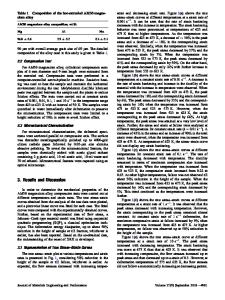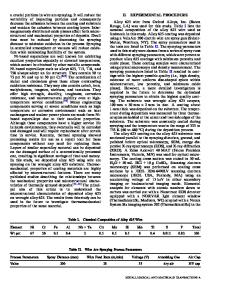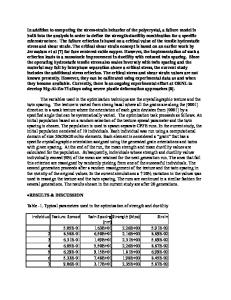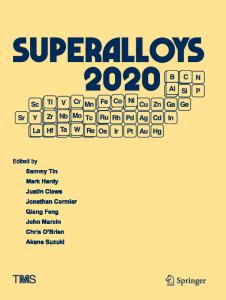Development of a New Wrought Magnesium-Aluminum-Manganese Alloy AM30
- PDF / 1,064,514 Bytes
- 9 Pages / 593.972 x 792 pts Page_size
- 67 Downloads / 299 Views
I.
INTRODUCTION
WROUGHT magnesium alloys have much less formability than steel and aluminum alloys at room temperature due to their hexagonal (hcp) crystal structure. AZ31 (Mg-3 pct Al-1 pct Zn) alloy is the most popular magnesium extrusion alloy. However, this alloy has much lower maximum extrusion speeds than the Al-Mg-Si based 6xxx series aluminum alloys, resulting in higher manufacturing costs compared to aluminum extrusions. In this article, a new experimental extrusion alloy, AM30 (Mg-3 pct Al-0.3 pct Mn), was designed with improved extrudability and formability. Tensile properties and formability of AM30 alloy were studied along with AZ31 at room and elevated temperatures. II.
MATERIALS AND EXPERIMENTAL PROCEDURES
A. AM30 Alloy Design Aluminum has the most favorable effect on magnesium of any of the alloying elements.[1] It improves strength, hardness, and corrosion resistance, but reduces ductility. An aluminum content of about 5 to 6 pct yields the optimum combination of strength and ductility for structural applications. Increasing aluminum content widens the freezing range and makes the alloy easier to cast but more difficult to extrude due to increased hardness. For example, alloys containing less ALAN A. LUO, Staff Researcher, and ANIL K. SACHDEV, Technical Fellow, Laboratory Group Manager, are with General Motors Research & Development Center, Warren, MI 48090-9055, USA. Contact e-mail: [email protected] Manuscript submitted October 12, 2006. Article published online June 6, 2007. 1184—VOLUME 38A, JUNE 2007
than 3 pct Al can be extruded at higher extrusion speeds compared to high-strength alloys such as AZ61 (Mg6 pct Al-1 pct Zn) and ZK60 (Mg-6 pct Zn-0.5 pct Zr).[2] To maximize the ductility and extrudability, while maintaining reasonable strength and castability (for billet casting prior to extrusion), an aluminum content of 3 pct was selected for the new alloy. Zinc is next to aluminum in effectiveness as an alloying ingredient to strengthen magnesium.[1] However, it reduces ductility and increases hot shortness of Mg-Al–based alloys. Zinc-containing magnesium alloys are prone to microporosity.[3] Zinc was also reported to have mild to moderate accelerating effects on corrosion rates of magnesium as determined by alternate immersion in 3 pct NaCl solution.[1] Therefore, unlike most commercial magnesium alloys, Zn was not selected in this experimental alloy. Manganese does not have much effect on tensile strength, but it does slightly increase the yield strength of magnesium alloys. Its most important function is to improve the corrosion resistance of Mg-Al based alloys by removing iron and other heavy-metal elements into relatively harmless intermetallic compounds, some of which separate out during melting. For this purpose, Mn is added at about 0.4 pct, as recommended by the ASTM Specification B93-94a. Based on these analyses and some preliminary experiments, a new magnesium alloy, AM30 (Mg-3 pct Al0.4 pct Mn), was formulated, as shown in Table I, aimed to provide a good balance of strength, ductility, e
Data Loading...











